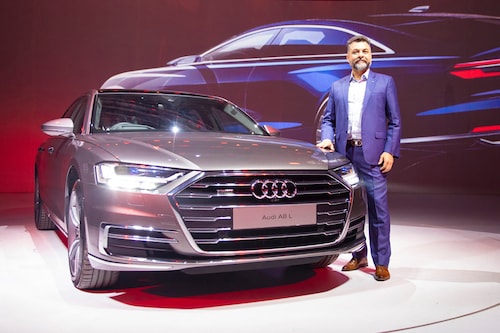In four to five years, 15% of our volumes to be fully electric cars: Audi India
Head of Audi India Balbir Singh Dhillon on dealing with the pandemic and other challenges, and the company's EV strategy


With a spate of nine launches in 2021, which included five electric cars, Audi India clocked 101 percent growth over 2020. In an interview with Forbes India, Balbir Singh Dhillon, head, Audi India, speaks about the luxury car market in India and how the company is eyeing a double-digit growth despite the current challenges. Edited excerpts:
Q. How did the slew of launches and the massive growth come about?
India moved from BS4 to BS6 from April 1, 2020. That was [also] the time we decided that instead of selling petrol and diesel cars, we will move towards petrol and electric cars. So we needed to do a lot of homologation work, which takes about 7-9 months for each of the cars. Unfortunately, because of the pandemic, some of the projects to be launched in 2020 got delayed to 2021. We launched one of our very successful cars, Audi Q5, toward the end of 2021, so we will get a full year of sales. We just launched the Q7, and a couple of more models are to be launched. We believe we will be growing double-digit this year.
Q. What is your EV strategy?
The vision is that Audi globally has decided to be a fully electric car company by 2033. And from 2026 onward, all the new launches will be electric. Of course, whatever gets launched in 2025 will be sold till 2033. In the next four to five years, we"re looking at about 15 percent of our volumes to be fully electric cars.
Q. How did you deal with challenges in the pandemic?
The most important thing for us was people, so it was whatever support we could give our people, customers, stakeholders, everybody. We also made a lot of investment in digital, so, if the customer was spending, say, 40 percent of his time before buying a car on digital medium, and 60 percent going to the showroom interacting, it reversed. Now we have end-to-end, from inquiry to booking to payment, to service, everything online.
Q. What are the challenges arising out of current situations?
The pandemic, followed by the semiconductor shortage, then the Ukraine-Russia war, massive lockdown in Shanghai impacted our supply chains. Then we have challenges related to shipping. So these are unpredictable times where it is almost impossible to give a long-term vision. We are living by the week, we are in touch with the headquarters about how many cars we’re able to produce. Visibility is the most difficult part.
First Published: May 05, 2022, 18:13
Subscribe Now